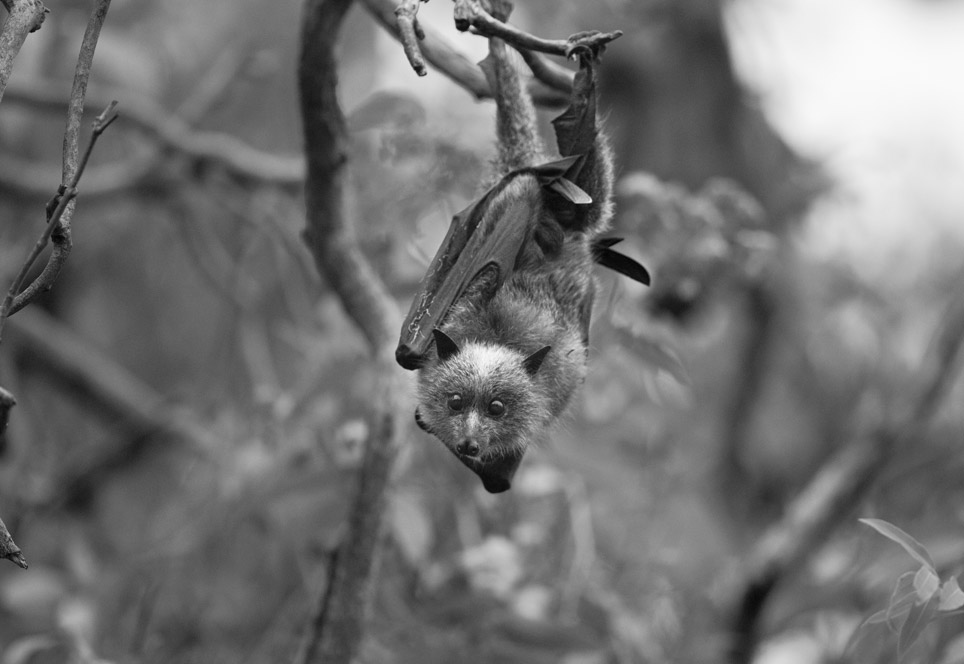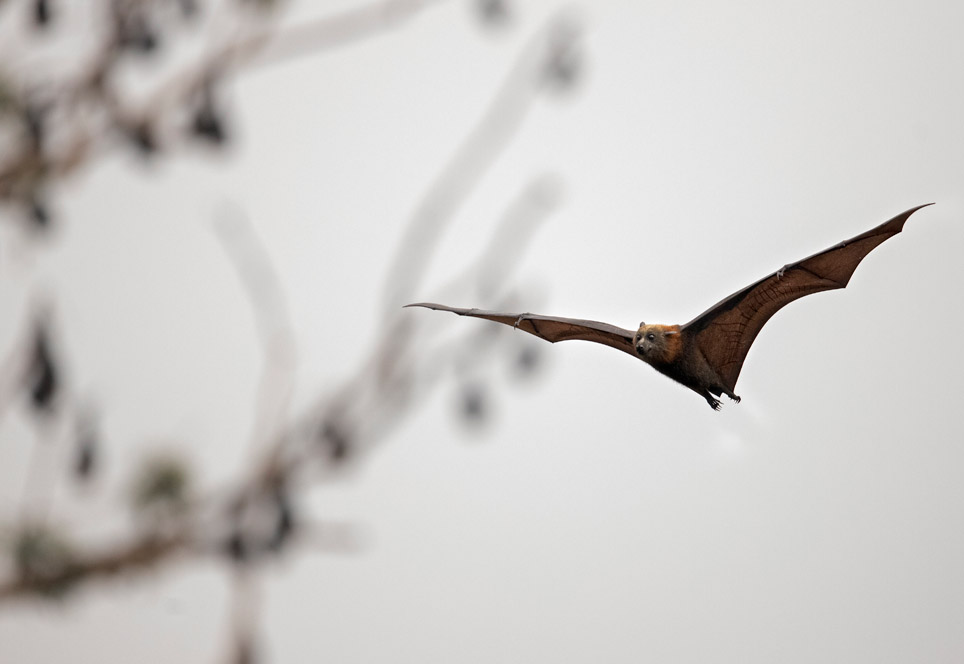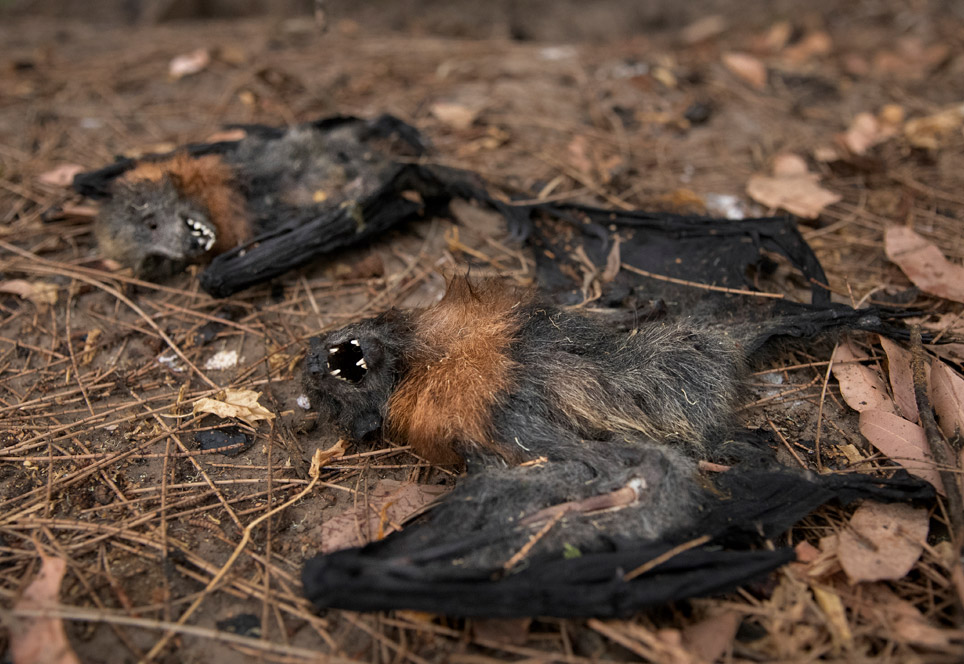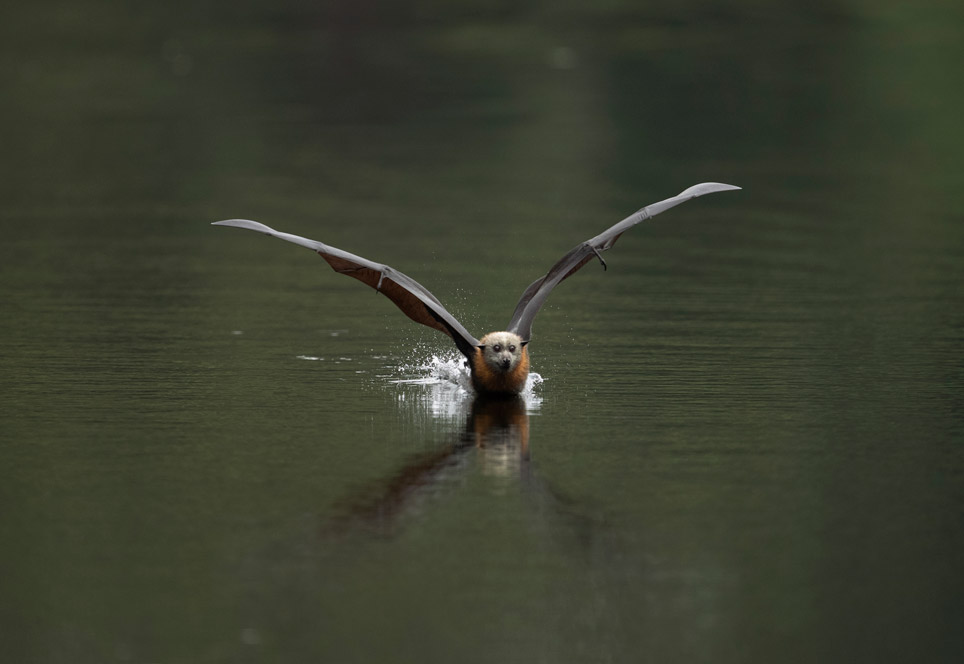A look at one of Australia’s key species and the impact it took with the rampant bush fires
Fruit Bats and their environment
Flying foxes are perhaps the largest and the most iconic nocturnal Australian species. They can often be seen at the beginning of the night, leaving their camps and soaring through the night. During these dark hours, Flying-foxes generally set out to feed on fruits and berries and can often be heard while flapping their large wings. When the darkness starts to fade away, these giant bats flock to their respective camps in which they will rest throughout the daylight hours and socialize with other Flying-foxes.These camps can only be described as ”overloaded.” Flying-foxes congregate in large trees in enormous numbers in which they generally fight for best locations on branches and also socialize within their trees.
These camps are filled with raucous and agitation throughout most of the daylight hours. However, during the late afternoon, the noise fades away and allows them to rest and regain their energy. This is the daily life of a flying-fox in the wild.

Camps and Summer
Australian summers can be very tortuous and intense with temperatures rising to fifty degrees or sometimes sixty degrees. Unfortunately, bats suffer from this greatly. During the hottest parts of the day, bats can quickly dehydrate or suffer from heat strokes. These high temperatures also make life hard for the surrounding vegetation which will sometimes burst up in flames and as a result, turn a whole forest or region into ashes.Sadly, the late 2019/early 2020 bushfire crisis was one of the effects of the scorching heat that impacted the Australian continent throughout the summer. The high temperature mixed with the raging flames and the toxic smoke became an extremely dangerous environmental hazard, which affected not only bats but also koalas, kangaroos, wallabies, wombats and many other living creatures within Australia.

Rampant Bushfires
Millions of animals lost their lives during the bushfire crisis. However, one of the species which was hardest hit in this crisis were Flying-foxes. Fires were continually devouring their habitat and camps while the smoke intoxicated them. Bats would drop from their branches dead, with their lungs full of smoke and completely dehydrated. It was a sorrowful and gruesome scene to witness. Some camps had piles of juvenile bats simply laying around while others fought for survival.
In the same scenario, hundreds of Flying-fox orphans were being delivered to wildlife hospitals across the country. The intakes were massive, and fortunately, a lot of the local wildlife was being rescued and rehabilitated. However, what was truly impressive to witness, were the Flying-fox camps that thrived throughout the smoke, the flames, and the heat.

Thriving through the storm
Fortunately, some Flying-fox communities remained unaffected. Camps that had access to freshwater still had a cooling method which prevented them from dehydrating or having heat strokes. These were also the busiest communities with thousands of bats in several trees which also contained the highest number of newborns.

Incredibly, Flying-foxes which inhabit near water locations will develop an incredible “cooling off” behaviour. By swooping on the water’s surface, they absorb the refreshing liquid on their soft fur which will enable them to re-hydrate while hanging upside-down and also will help them bring their body temperature down.
My whole project was dedicated to these few intense camps. I wanted to portray healthy camps and their inhabitants. I also wanted to display these “swoops” and how incredible these small moments can be. Conservation is not always about showing the dark side of things but also providing hope in horrible moments and fighting for them to stay that way.
Help after the storm
After a long period of flames and smoke, Australia has officially declared itself bushfire free. However, local vegetation and wildlife still need help recovering from the rampant fires. The bushfire crisis has claimed thousands of lives, and Australia has only recently begun recovering from this immense environmental catastrophe. The good news is that there is still a comeback from all of this disaster, and soon Australia will be rehabilitated.
Fortunately, you can be a part of this and help conserve Australia too. During the current period, many Australian animal species are still facing challenges and require all the attention they can get. In order to do so, scientists, conservationists, biologists and veterinarians are doing all they can do to restore the Australian bush to its former health. To help, you can donate to a conservation fund and help people in the field continue their work. To find out more about helping Bushfire relief, visit www.wwf.org.au.